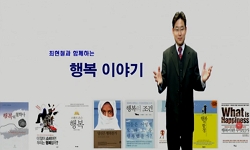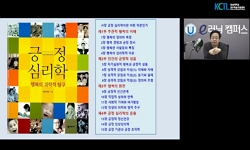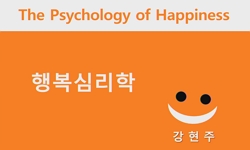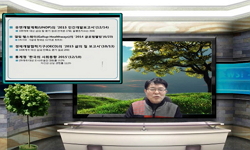목적: 대한민국은 ‘국민여가활성화기본법’과 ‘주52시간근무제’도입과 같이 국민의 여가를 보장하기 위한 노력을 기울였다. 그러나 2019년 발병한 COVID-19로 인하여 우리의 삶은 송두리째 ...
http://chineseinput.net/에서 pinyin(병음)방식으로 중국어를 변환할 수 있습니다.
변환된 중국어를 복사하여 사용하시면 됩니다.
- 中文 을 입력하시려면 zhongwen을 입력하시고 space를누르시면됩니다.
- 北京 을 입력하시려면 beijing을 입력하시고 space를 누르시면 됩니다.
https://www.riss.kr/link?id=A108398250
- 저자
- 발행기관
- 학술지명
- 권호사항
-
발행연도
2022
-
작성언어
-
- 주제어
-
KDC
0
-
자료형태
학술저널
-
수록면
68-70(3쪽)
- 제공처
-
0
상세조회 -
0
다운로드
부가정보
국문 초록 (Abstract)
목적: 대한민국은 ‘국민여가활성화기본법’과 ‘주52시간근무제’도입과 같이 국민의 여가를 보장하기 위한 노력을 기울였다. 그러나 2019년 발병한 COVID-19로 인하여 우리의 삶은 송두리째 바뀌었고, 다양한 제약이 발생하면서 본인의 의사와 상관없이 여가시간이 갑자기 증가하게 되었다. 때문에 여가에 대한 인식과 행복에 대한 생각이 변화했을 가능성이 높다. 시간을 인식하는 것은 매우 주관적이기에 그것이 길고 짧은지 느끼는 것에 따라 ‘자신이 충분한 시간을 갖고 있다’고 생각하는 것도 다르게 나타날 수 있다. 따라서 이 연구를 통해 ‘2019년도와 2021년도 국민여가활동조사’를 활용하여 코로나 발생 전과 후의 여가시간, 여가시간충분도, 여가만족, 그리고 행복과의 관계를 비교, 분석하고자 한다. 과정: 국민여가활동 조사의 전체 표본 수는 2019년 10,060명, 2021년 10,049명이다. 측정변인으로 인구사회학적특성은 성별, 나이, 교육 수준, 결혼 유무, 월 소득을 살펴보았고, 주요변인은 평일 여가시간, 평일 여가시간충분도, 여가생활만족도, 행복을 활용하였다. 자료처리방법으로 SPSS 27.0 version을 활용하여 빈도분석과 기술통계 분석을 실시하였다. 또한, 변인 간의 관계를 규명하기 위해 상관관계분석과, Andrew F. Hayes가 개발한 Process Macro 프로그램의 Model 7번을 활용하여 분석하였다. 모든 통계치에 대한 유의수준은 5%로 설정하였다. 결과: 분석결과 다음과 같은 결과가 도출되었다. 첫째, 평일 여가시간과 행복은 2019년도에 비해 2021년도가 높은 반면에, 평일 여가시간충분도와 여가생활만족도는 낮은 것으로 나타났다. 둘째, 평일 여가시간은 2019년과 2021년 모두 행복에 부적인 영향을 미치는 것으로 나타났다. 셋째, 2019년도의 평일 여가시간과 행복의 관계에서 여가생활만족도는 매개효과가 없는 것으로 나타났다. 반면에, 2021년도는 평일 여가시간과 행복의 관계에서 여가생활만족도는 매개효과가 있는 것으로 나타났다. 넷째, 2019년의 경우, 평일 여가시간과 행복의 관계에서 여가생활만족도의 매개효과가 없는 것으로 나타났으나, 평일 여가시간충분도의 수준에 따른 여가생활만족도의 조절된 매개효과가 있는 것으로 나타났다. 2021년의 경우, 평일 여가시간과 행복의 관계에서 여가시간충분도의 수준에 따른 여가생활만족도의 조절된 매개효과가 있는 것으로 나타났다. 여가시간충분도가 높은 집단은 여가시간이 증가할수록 여가만족도가 낮아지고, 여가시간충분도가 낮은집단은 여가시간이 증가할수록 여가만족도가 높아지는 것으로 나타났다. 결론: 여가시간충분도는 여가시간이 여가만족을 경유하여 행복으로 가는 경로를 조절하였다. 자신이 하고자 하는 의지와 결과의 만족에서 가치는 결정되는 것이다. 하루에 더 많은 여가시간을 가지지 않고도 그 시간을 풍요롭게 느끼며, 자신의 여가활동에 최대한의 만족감을 느낄 수 있는 방법을 강구하려는 노력은 행복한 삶의 가치를 극대화할 것으로 기대된다.
다국어 초록 (Multilingual Abstract)
Purpose: The Republic of Korea has made efforts to guarantee the leisure of the people, such as the introduction of the “Framework Act on Leisure Activation” and the “52-hour maximum work week policy”. However, due to COVID-19, which occurred ...
Purpose: The Republic of Korea has made efforts to guarantee the leisure of the people, such as the introduction of the “Framework Act on Leisure Activation” and the “52-hour maximum work week policy”. However, due to COVID-19, which occurred in 2019, our lives have changed, and as various restrictions have occurred, leisure time has suddenly increased regardless of our intention. Therefore, it is highly likely that the perception of leisure and the idea of happiness have changed. Recognizing time is so subjective that depending on how you feel whether it is long or short, thinking that you have enough time can also appear differently. Therefore, through this study, we intend to compare and analyze the relationship between leisure time, leisure time sufficiency, Leisure life satisfaction, and happiness before and after the COVID-19 outbreak using the “2019 and 2021 National Leisure Activity Survey”. Method: The total number of samples in the National Leisure Activity Survey was 10,060 in 2019 and 10,049 in 2021. As measurement variables, demographic characteristics were examined by gender, age, education level, marital status, and monthly income, and the main variables were leisure time on weekdays, leisure time sufficiency on weekdays, satisfaction with leisure life, and happiness. Frequency analysis and descriptive statistics analysis were conducted using SPSS 27.0 version as data processing methods. In addition, Model 7 of the Process Macro program developed by Andrew F. Hayes was used to identify the relationship between variables. The significance level for all statistics was set to 5%. Result: The conclusions derived from this were as follows; First, it was found that leisure time and happiness on weekdays were higher in 2021 than in 2019, while leisure time sufficiency and Leisure life satisfaction were lower. Second, leisure time on weekdays was found to have a negative effect on happiness in both 2019 and 2021. Third, it was found that leisure life satisfaction had no mediating effect in the relationship between leisure time and happiness on weekdays in 2019. On the other hand, in 2021, leisure life satisfaction was found to have a4)mediating effect in the relationship between leisure time and happiness on weekdays. Fourth, in 2019, there was no mediating effect of leisure life satisfaction in the relationship between leisure time and happiness, but there was a moderated mediating effect of leisure life satisfaction according to the level of leisure time sufficiency. In the case of 2021, it was found that there was a moderated mediating effect of leisure life satisfaction according to the level of leisure time sufficiency in the relationship between leisure time and happiness. It was found that leisure life satisfaction decreased as leisure time increased in the group with higher level of leisure time sufficiency, however leisure life satisfaction increased as leisure time increased in the group with lower level of leisure time sufficiency. Conclusion: Leisure time sufficiency moderated the relationship between leisure time and happiness mediated by Leisure life satisfaction. The value is determined by the will to do and the satisfaction of the result. Efforts to find ways to feel rich in time without having more leisure time a day and feel the maximum satisfaction of one's leisure activities are expected to maximize the value of a happy life.
동일학술지(권/호) 다른 논문
-
- 한국융합과학회
- 권가진
- 2022
-
공연예술 융합콘텐츠 개발을 위한 무용 안무의 방향 연구
- 한국융합과학회
- 이주영
- 2022
-
- 한국융합과학회
- 한승백
- 2022
-
공공성 개념 탐색을 통한 스포츠정책 연구분야 적용 검토
- 한국융합과학회
- 강태희 ( Tae-hee Kang )
- 2022




 KISS
KISS






